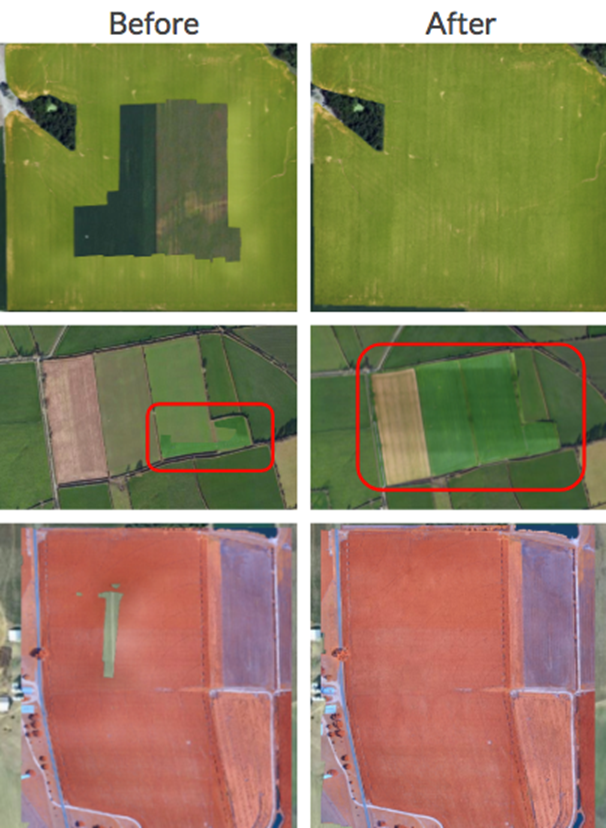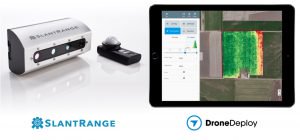DroneDeploy pronounces new options, permitting growers to make use of their trade main drone mapping platform with agriculture particular sensors, together with SLANTRANGE calibrated multi-spectral sensors and Sentera’s close to infrared sensors.
“We’ve listened to our customers’ requests and worked with leading technology partners in the industry to help growers detect crop variability sooner and compare plant health over time,” mentioned DroneDeploy CEO and co-founder Mike Winn.
In addition, DroneDeploy launched enhancements to its proprietary map processing algorithms to handle among the most typical challenges growers face when mapping late-stage crops.
“Until now, stitching late stage crops has remained an unsolved problem in image processing,” mentioned Nick Pilkington, CTO and co-founder of DroneDeploy. “We’re excited to deliver a solution to our customers that lets them create high quality maps at all stages of crop growth.”
Most growers begin out with the seen spectrum cameras that come commonplace on drones just like the DJI Phantom four Pro, however many flip to sensors designed particularly for agriculture in an effort to carry out extra correct, scientific evaluation of plant well being. Now DroneDeploy clients can fly and seize imagery and course of and interpret maps utilizing sensors from Sentera and SLANTRANGE, all appropriate with the newest DJI drones.
“To create a DroneDeploy map with these sensors, users should install the free SLANTRANGE or Sentera application within DroneDeploy, fly using the DroneDeploy mobile app, and upload imagery to DroneDeploy for processing,” says the announcement. “Once the map is complete, users will be able to view, analyze and share plant health data specific to the sensor used, providing an end-to-end solution all within the DroneDeploy software suite.”
The supported near-infrared sensors from Sentera, together with the High-Precision NDVI Single sensor and the Sentera Double 4K, enable growers to create NDVI (normalized distinction vegetation index) maps to precisely detect crop stress.
“Sentera is excited to bring our most popular and most affordable high-precision NDVI sensor to the DroneDeploy platform. We’re committed to supporting our customers’ preferred workflows and enabling an open and accessible set of downstream analytics based on genuine NDVI and other index products,” mentioned Eric Taipale, Sentera’s CEO. “Our partnership with DroneDeploy does just that, providing DroneDeploy users a seamless integration with Sentera’s high-quality sensors going forward.”
The SLANTRANGE 3p sensor captures high-resolution, calibrated, multi-spectral imagery knowledge utilizing patented daylight calibration algorithms in order that growers and agronomists can precisely evaluate crop knowledge over time.
“SLANTRANGE is committed to promoting an open ecosystem that allows customers to collect and process their data using a combination of tools that work best for their business,” mentioned Matthew Barre, Director of Strategic Development at SLANTRANGE. “This partnership gives DroneDeploy customers access to the accuracy and specificity of SLANTRANGE’s true multi-spectral imagery.”
DroneDeploy explains that they’ve taken an revolutionary strategy to mapping late-stage crops in an effort to achieve a 95% discount in “map holes.”
“Late-stage crops pose a challenge for mapping software, which relies upon identifying unique points that appear in several different images to “stitch” collectively a map,” says DroneDeploy. “Growers that have used drones for mapping in seasons past are all too familiar with what can result — maps with holes, warped areas, or even maps that fail to process at all.”
“It’s an issue we’ve been having in the last couple of years, especially in corn crops,” mentioned Robbie Weathers, an agronomist in South Carolina. “Trying to stitch together a corn field late in the season is like trying to stitch the ocean — it’s really hard.”
DroneDeploy has improved their proprietary processing algorithm to “address the specific challenges of late-stage field maps.”
“Extensive testing demonstrated that incomplete maps processed using the previous stitching algorithm resulted in complete maps 90-95% of the time when reprocessed using the improved algorithm.”
One of the reprocessed maps belonged to Kevin Wright, a corn and soybean grower and business drone pilot in Illinois.

“Being able to close a hole as big as that,” he mentioned, referring to the distinction between his authentic map, and he reprocessed full map, “it’s very impressive — especially for a map flown in windy conditions. It just proves that DroneDeploy is headed in the right direction as far as being able to solve these particular problems.”
Not solely have been the reprocessed maps full, lots of them additionally confirmed important enhancements in accuracy and picture sharpness.
 Unmanned Aerial Vehicle The latest drone news
Unmanned Aerial Vehicle The latest drone news




